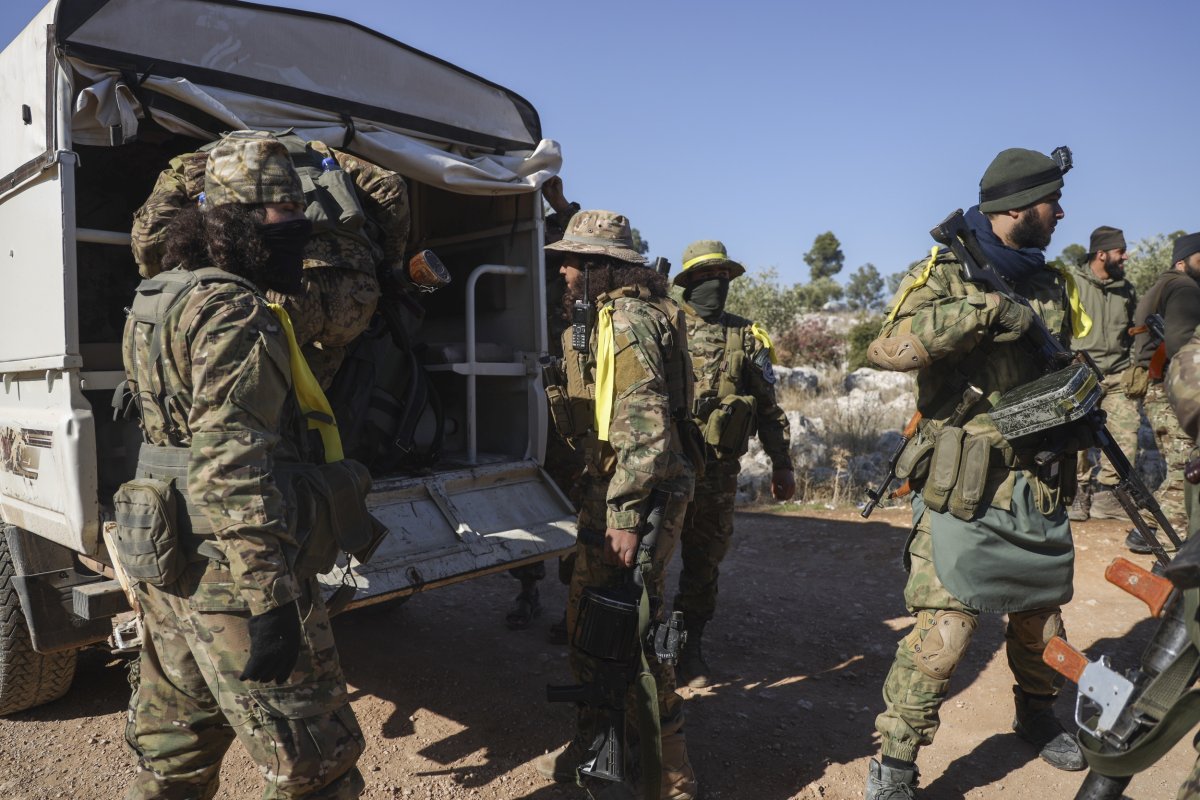Thousands of Syrian opposition fighters, led by the Hayat Tahrir al-Sham (HTS) group, have pushed forward with their offensive in the northwest, moving closer to the city of Aleppo and capturing several key towns and villages in the region, according to activists.
The military gains, described as one of the largest by rebel forces in recent months, have escalated the fighting in the area, which has been a long-standing opposition stronghold.
The push has brought them to the outskirts of Syria's second-largest city, with rebel forces taking control of the Scientific Research Center neighborhood on the western edge of the city.
It marks the closest the opposition has come to Aleppo since their defeat in 2016, when Syrian government forces, backed by Russia and Iran, retook the city after a brutal siege.

How Much of Northwestern Syria is Under Rebel Control?
The advance is seen as a significant challenge to the government's control in the area.
Syria's state media reported that insurgent projectiles hit student accommodations at Aleppo's university on Friday, killing four people, including two students.
Public transportation routes linking Aleppo to Damascus have been diverted to avoid the fighting, state-run outlets said.
Fighting has also intensified in the town of Saraqab, located in the northwestern Idlib province.
The area is strategically important for securing supply lines to Aleppo, and its capture by the insurgents would represent a key gain in their offensive.

Which Areas Have Syrian Armed Forces Targeted?
The Syrian Armed Forces have responded with airstrikes targeting insurgent positions in the surrounding countryside.
The latest escalation follows weeks of simmering violence in the region and is the most intense fighting since 2020, when government forces regained control of large parts of northwest Syria.
Syrian state media has accused the insurgents of violating a 2019 de-escalation agreement, which had helped reduce hostilities in the area.
The conflict has led to casualties on both sides.
The Syrian Observatory for Human Rights reported dozens of deaths among fighters since the offensive began on Wednesday.
Opposition fighters claim to have seized control of over 50 villages as part of their advance, catching government forces off guard.
The insurgents have also employed drones in their attacks, a relatively new tactic that appears to be playing a role in the current battle, though the extent of drone use remains unclear.
Humanitarian organizations have warned that the ongoing fighting has displaced thousands of civilians, forcing the suspension of some services in the region.
Opposition groups have said their offensive will ultimately help displaced people return to areas they were forced to flee due to heavy government bombardment in recent months.
The latest escalation comes as Iran-backed forces, which have supported Syrian government troops since 2015, are increasingly distracted by the ongoing conflict with Israel and Hezbollah in southern Syria.
Which Countries Support Bashar al-Assad?
While a ceasefire between Hezbollah and Israel was announced on Wednesday, the heightened tensions have drawn attention away from the Syrian battlefield.
Meanwhile, Israel has ramped up airstrikes against Hezbollah and Iran-linked targets in Syria over the past two months.
Russia and Iran have long supported President Bashar al-Assad's government in the Syrian civil war, while Turkey has provided backing to various opposition factions and maintains a military presence in parts of northwestern Syria.
The U.S. has supported Kurdish forces in eastern Syria in the fight against Islamic State militants.
As the battle for northwest Syria intensifies, the situation remains fluid, with both sides vying for control over key strategic locations.
The outcome of this latest offensive could have significant implications for the balance of power in the region.
This story contains additional reporting from The Associated Press.


















 English (US) ·
English (US) ·